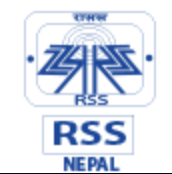Must-know facts about Bhakti Thapa, a new Nepali luminary

KATHMANDU, July 3: Recently, Bhakti Thapa has got the new limelight. A great warrior who lost his life in the Anglo-Nepal war some 206 years ago was declared the Nepali luminary on Wednesday.
A Cabinet meeting day decided to recognize Thapa as the new national hero which has given euphoric reactions from all institutions and individuals demanding luminary declaration for Bhakti Thapa.
With the declaration, Bhakti Thapa has been placed together with other 16 luminaries of Nepal. They include Amshuverma, Amarsingh Thapa, Araniko, Gautam Buddha, Janak, Pasang Lhamu Sherpa, Prithvinarayan Shah, Balbhadra Kunwar, Bhanubhakta Acharya, Bhimsen Thapa, Mahaguru Phalgunanda, Motiram Bhatta, Ram Shah, Sankhadhar Sakhwa, Tribhuwan and Sita.
Bhakti Thapa Foundation, Brave Bhakti Thapa National Unity Study Center, Puwar Thapa Chhetri Welfare Committee, among others, were the institutions lobbying for luminary declaration to Bhakti Thapa. Likewise, various individuals who have studied about the bravery and contribution of Bhakti Thapa in Nepal's unification drive and the Anglo-Nepal war had also been demanding the same.
There is newfound curiosity among various people about Bhakti Thapa. Here are some three facts about this legendary Nepali warrior:
Arrival in Kathmandu as a war prisoner
Bhakti Thapa was born in 1742 at today's Dhangaibeshi of Marshyangdi Rural Municipality-3 of Lamjung district. Bhakti Thapa has been revered as one of the greatest soldiers of all time in the Nepal Army. It is interesting to note that his entry into the Nepal Army was as a war captive.
He had fought with the Nepal Army who launched a military offensive to integrate Lamjung into Nepal. It was in 1783 when the military confrontation erupted and Nepal Army deployed from Kathmandu got victory over Lamjung, the then principality but now a district of Nepal. He was brought into Kathmandu as a Prisoner of War (POW). He was around 41 years old when he was captured.
Despite his previous position as POW, Bhakti Thapa turned loyal to Nepal Army and joined it whole-heartedly, says retired Brigadier General Prem Singh Basnyat who has written and researched on Bhakti Thapa.
According to Basnyat, Bhakti Thapa was given an entry position called 'Suvangi' in the Nepal Army. Later on, he was promoted into 'Sardar' which was synonym of present day 'captain' of Nepal Army in 1794. This shows that within a decade of being POW of Nepal Army, Bhakti Thapa rose himself above the rank of the same organization owing to his sincerity, dedication, patriotism and military leadership.
Indispensable military leader to expand Nepal's unification
Integration of principalities in western Nepal was accomplished under the leadership of Bahadur Shah. Ranabahadur Shah was the official monarch during that time. For integrating western section of today's Nepal, Bhakti Thapa was an indispensable military leader. According to military historian Prem Singh Basnyat who has 18 books to his credit, Bhakti Thapa proved his military leadership after successfully quelling a revolt against Nepal in Jumla.
In 1789, Jumla was integrated into Nepal. However, the then seemingly stronger principality Jumla revolted against the Nepal Army. Jumla was bolstered by additional support from Tibetan side. It was Bhakti Thapa who managed the revolt and gave no space for further revolt. Likewise, Doti also revolted against Nepal. Bhakti Thapa quelled the revolt and asserted Nepal's sovereignty there. Bhakti Thapa made a huge contribution to assert Nepal's sovereignty beyond Mahakali river which is now the border between Nepal and India.
Oldest military official from Nepal Army to have got martyrdom at the battlefield
Bhakti Thapa got his martyrdom at the battlefield. He got his martyrdom on 16 April 1815. He was 73-year-old then. According to Basnyat the historian, Bhakti Thapa is the only officer from Nepal Army who was killed at that elderly age in the battlefield.
''He is my greatest iconic military officer in the Nepal Army,'' says Basnyat. Nepal and British India, commonly known as East India Company, fought war for two consecutive years. The official announcement of the war was proclaimed on 1 November 1814 which formally ended on 4 March 1816 after the signing of the Sugauli Treaty. During the war, Bhakti Thapa is regarded as the bravest one. He breathed his last at Malaun fort which currently lies at Bilaspur or Rajgadh area of India's Himanchal Province.
According to Basnyat, the battle of Malaun fort was significant for three reasons. ''First, Sardar Bhakti Thapa was 73 while he was fighting the British from this fort and he was martyred here. Bhakti Thapa was actually gunned down while he was on the top of the cliff 300 yards east from Malaun'' said Basnyat, ''Second, the war at Malaun started after the British troops, defeating Nepalis in Sutlaj-Nalagadh area, advanced towards Malaun. Badi Kaji Amar Singh Thapa reached the conclusion that the war with the British could not be won and he had an agreement with David Ochterlony on 15 May 1815 at this fort ceding lands from Sutlaj to Mahakali in the east. ''
He added, ''The agreement on 15 May 1815 has the provision which allows those serving in Nepali Army, those defected and even other Nepalis for legal recruitment in British Indian Army



Leave Comment